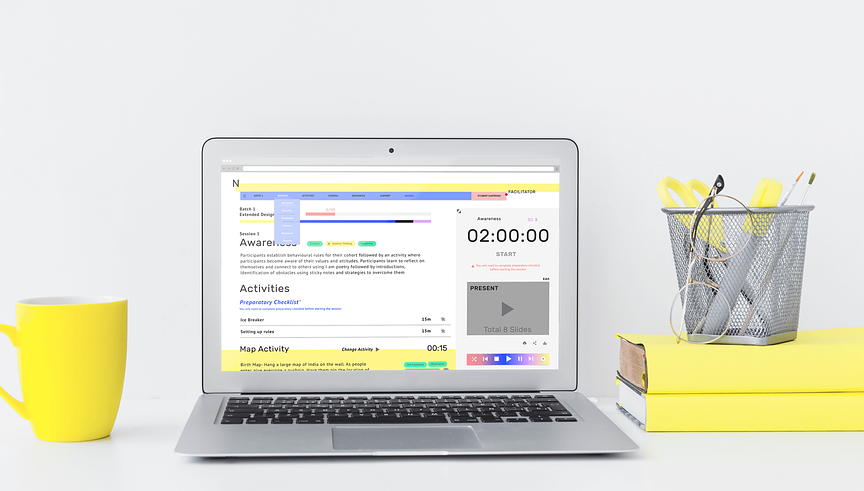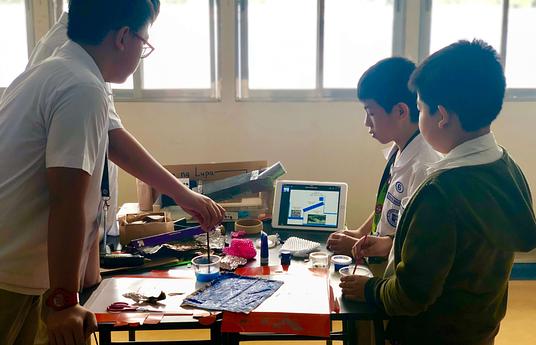What we do?
The learning model of Extended Design Thinking seeks to create passionate individuals with capabilities of empathetic thought building and creativity. The core of this course is active learning. This engages the students in participatory actions towards building knowledge out of experience. We have developed a learning cycle that helps student restore humanistic skills through understanding oneself, practicing failure, defining gaps, building solutions to meet those gaps and then experimenting solutions. This has been adapted from Design Process practiced throughout ages at different situations.
How to use EDT?
Planning
At an early stage of the activities, the facilitator must plan in order to create self-realization amongst the students. These would be communication-driven challenges that can actively trigger new experiences.
Sharing
The EDT model functions through benefits of working and practicing the process when setup in a diverse group. Sharing knowledge, experiences and the ability to create together form effective learning and stronger retention.
Reflection
Using the assessment rubric, facilitator must evaluate and reflect on the student’s process of learning and achieving goals. The rubric gives value to the learning outcomes of the student, than the final result of their submission. It must be taken in consideration that all students would require individual times and spaces for delivering end-results. This consideration will help facilitators assess their process of learning better.
Web application provided by Nodes is a tool for facilitation of Extended Design Thinking in the institution participated by Teachers, Students and Institute Administrator. The role of the software is vital in the process of facilitation, learning and knowledge retention. It also keeps a track of every student and teacher involved in the process and helps in assessment of all the people involved. The application is divided into three parts namely Teacher Login, Student Login and Institution Administrator login.
Why we do it?
While helping start-ups and students to understand ‘Design Thinking’ as a tool and conducting such more workshops in bigger companies like Microsoft and NIVEA, we realized that there was a dire need to expand their abilities of cognitive thinking and innovative problem solving. After six months of thorough in-depth research in prominent educational institutions in India like IIM, IIT, IISc, MIT Pune, Symbiosis etc., and meeting with faculty and students, we realized the following problems faced by students: Students were troubled by the idea of making decisions or choices, and had more or less no empathy for others’ problems. We realized that our education system itself lacked in training students to learn through observation and experience. In fact, no part of the education right’ from the age of six taught students how to think for themselves. They lacked building their own thought processes. While the research took us straight down to problems related to childhood and upbringing, we took an executive decision of solving the problem at a higher education level, to start by increasing awareness of the problem and to understand results at professional levels.



